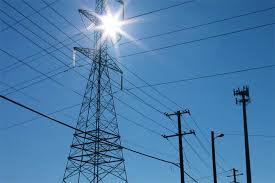In this article we will be talking about power and energy, circuit elements, their application, and some problem solving. At the end of this article we hope it will provide all the necessary details you are looking for.
POWER AND ENERGY
Although current and voltage are the two variable in an electric circuit, they are not sufficient by themselves. For practical purposes, we need to know much power an electric device can handle. We all know from experience that a 100-watt bulb gives more light than a 60-watt bulb.
We also know that when we pay our bills to the electric utility companies, we are paying for the electric energy consumed over a certain period of time. Thus power and energy calculations are important in circuit analysis.
From physics we said that:
Power is the time rate of expending or absorbing energy, measured in watt(W)
P = dw/dt
Where p is power in watt(W), w is energy in joules(J), and t is time in second (s)
P = dw/dt = dw/dq × dq/dt = vi
P = vi
The power p is a time-varying quantity and is called the instantaneous power. The power absorbed or supplied by an element is the product of the voltage across the element and the current through it.
Current direction and voltage polarity play a major role in determining the sign of power. It is therefore important that we pay attention to the relationship between current I and voltage V. Passive sign convention, current enter through the positive polarity of the voltage. In this case, P = + VI or VI > 0, implies that the element is absorbing power. How ever if P = -VI or VI < 0 the element is releasing or supplying power.
Unless otherwise stated, we would follow the passive sign convention. For example, an element absorbs power of +12W because a positive current enter the positive terminal in both cases. If an element supplying power of –12W.
Power absorbed = power supplied
The law of conservation of energy must be obeyed in any electric circuit. For this reason, the algebraic sum of power in a circuit, at any instant of time, must be zero:
This again confirm the fact that total power supplied to the circuit must balance the total power absorbed.
Example 1. An energy source forces a constant current of 2 A for 10 s to flow through a lightbulb. If 2.3 kJ is given off in the form of light and heat energy, calculate the voltage drop across the bulb.
Solution:
The total charge is:
∆q = I∆t = 2 × 10 = 20 C
The voltage drop is:
v = ∆w /∆q = 2.3 × 103/ 20 = 115V
Example 2. Find the power delivered to an element at t = 3 ms if the current entering its positive terminal is:
I = 5 cos 60πt A
and the voltage is: (a) v = 3i, (b) v = 3 di/dt.
Solution:
(a) The voltage is v = 3i = 15 cos 60πt; hence, the power is
p = vi = 75 cos2 60πt W
At t = 3 ms,
p = 75 cos2 (60π × 3 × 10−3 ) = 75 cos2 0.18π = 53.48 W
(b) We find the voltage and the power as
v = 3 di/ dt = 3(−60π )5 sin 60πt = −900π sin 60πt V
p = vi = −4500π sin 60πt cos 60πt W
At t = 3 ms,
p = −4500π sin 0.18π cos 0.18π W
= −14137.167 sin 32.4◦ cos 32.4◦ = −6.396 Kw
CIRCUIT ELEMENTS
An electric circuit is simply an interconnection of the elements. Circuit analysis is the process of determining voltages across or current through the element of the circuit.
Elements are of two type in electric circuit: Passive elements and active elements. An active element are elements that can generate energy, while passive elements is not.
Example of passive elements includes: resistors, capacitors, and inductors. Typical active elements include batteries, generators, and operational amplifiers. The most active elements are voltage and current source that generally deliver power to the circuit connected to them. Sources are of two type: independent and dependent sources.
An ideal independent source is an active element that provides a specified voltage or current that is completely independent of other circuit variables.
In other words, an ideal independent voltage source delivers to the circuit whatever current is necessary to maintain its terminal voltage. Physical sources such as batteries and generators may be regarded as approximations to ideal voltage sources. Similarly, an ideal independent current source is an active element that provides a specified current completely independent of the voltage across the source. That is, the current source delivers to the circuit whatever voltage is necessary to maintain the designated current.
An ideal dependent (or controlled) source is an active element in which the source quantity is controlled by another voltage or current.
Dependent sources are usually designated by diamond-shaped symbols. Since the control of the dependent source is achieved by a voltage or current of some other element in the circuit, and the source can be voltage or current, it follows that there are four possible types of dependent sources, namely:
1. A voltage-controlled voltage source (VCVS).
2. A current-controlled voltage source (CCVS).
3. A voltage-controlled current source (VCCS).
4. A current-controlled current source (CCCS).
Dependent source help in modeling elements such as transistors, operational amplifier and integrated circuit.


